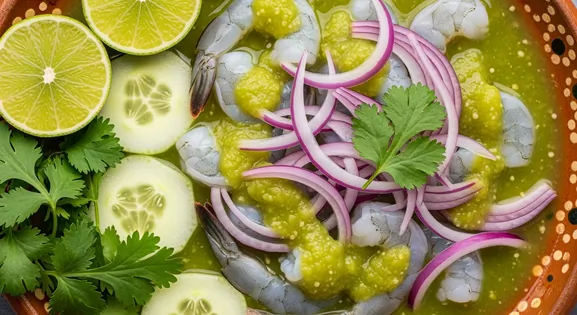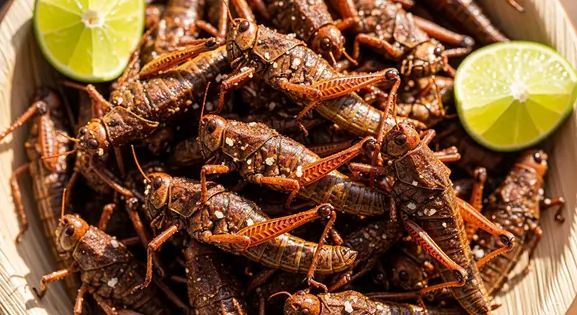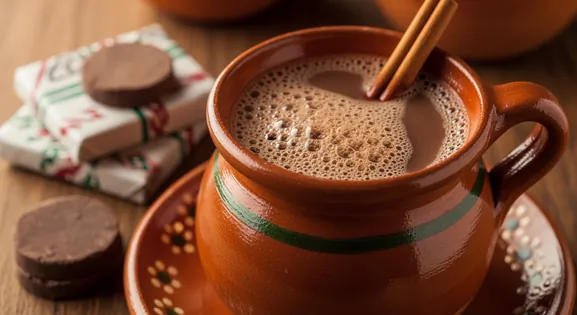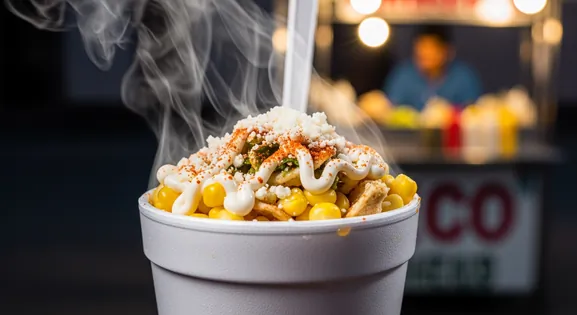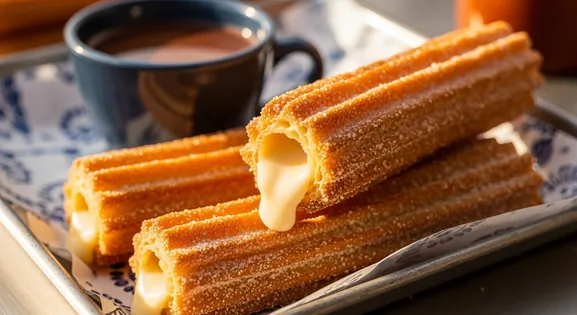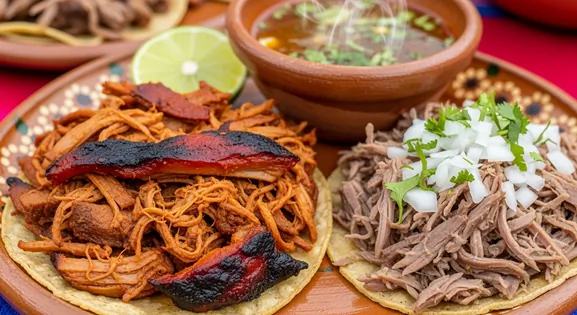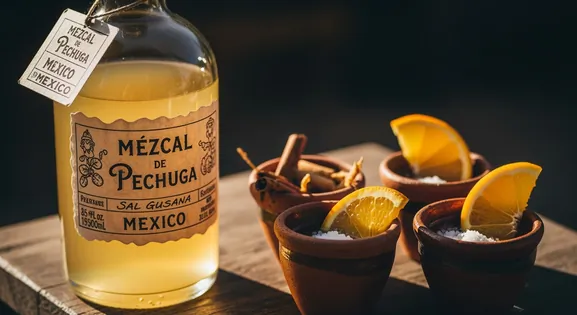Memelas in Mexico: A Complete Food Lover's Guide
Memelas
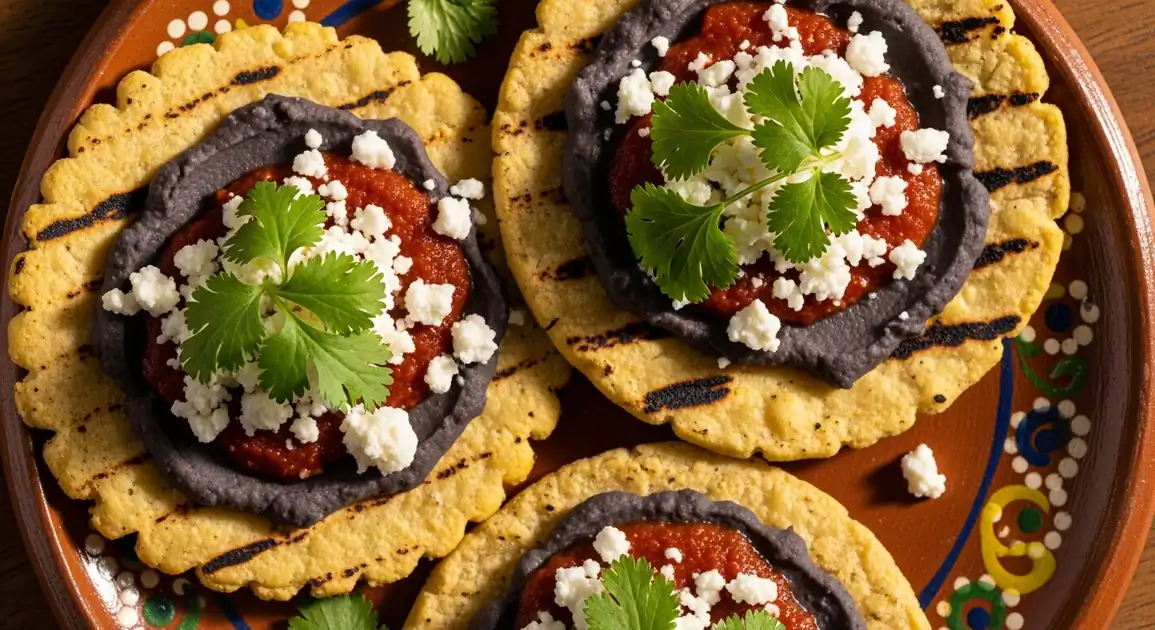
The Basics of Memelas
Memelas are traditional Oaxacan street food consisting of thick hand-pressed corn masa patties with pinched edges, grilled on a comal (griddle), then topped with asiento (pork fat), black bean paste, crumbled queso fresco, and salsa. This rustic antojito (snack) showcases the region's reverence for corn and simple, flavorful ingredients, creating a satisfying dish that's a cornerstone of Oaxacan cuisine.
How It Is Traditionally Made
Memelas begin with fresh nixtamalized corn masa, often ground daily. The masa is formed into thick, oval-shaped patties (thicker than tortillas) with characteristic pinched edges. These are cooked on a hot comal (traditional griddle) until slightly crisp on the outside but still tender inside. While still hot, they're typically brushed with asiento (rendered pork fat), spread with a thin layer of mashed black beans, sprinkled with crumbled queso fresco, topped with chopped cilantro and onion, and finished with red or green salsa. The cooking process ensures the masa is thoroughly cooked, indicating a quality preparation.
Key Ingredients of Memelas
Nixtamalized Corn Masa
The foundation of memelas, this dough is made from corn kernels treated with an alkaline solution (like slaked lime), then ground. This process enhances nutritional value and makes the masa pliable.
Quality indicator: Look for masa that is freshly ground, moist, and has a subtle, earthy corn aroma, indicating proper preparation and freshness.
Asiento (Pork Lard)
Rendered pork fat, often with crispy bits of pork, brushed onto the hot memela. It provides a rich, savory depth and helps crisp the masa.
Quality indicator: Quality asiento should be clear, golden, and have a clean, savory aroma, indicating it's fresh and well-rendered.
Black Bean Paste
A creamy, savory paste made from slow-cooked black beans, often seasoned with onion, garlic, and epazote. It forms a foundational layer of flavor on the memela.
Quality indicator: The bean paste should be smooth, well-seasoned, and have a deep, earthy flavor, indicating slow cooking and quality ingredients.
The Perfect Accompaniments
Atole
Beverage
A warm, thick, corn-based drink, often flavored with chocolate, vanilla, or fruit. Its comforting sweetness and creamy texture perfectly complement the savory, rustic flavors of memelas, especially for breakfast.
Agua Fresca
Beverage
Light, refreshing fruit-infused waters (like jamaica, horchata, or tamarindo) that offer a sweet and tangy contrast to the rich, savory memelas, cleansing the palate between bites.
History and Origins
Memelas have pre-Hispanic origins, dating back to ancient Mesoamerican cultures who developed nixtamalization (treating corn with lime) to create nutritious, workable masa. The name likely derives from Nahuatl, the Aztec language. For centuries, indigenous women in Oaxaca have prepared these simple corn cakes as an economical, filling food. While the base has remained relatively unchanged, the toppings evolved after Spanish colonization with the introduction of pork fat and cheese. Today, memelas remain a beloved traditional food and cultural touchstone in Oaxaca.
Local Memelas Variations in Mexico
Memelas with Tasajo
Topped with thin slices of tasajo (air-dried beef), a Oaxacan specialty, in addition to the standard toppings.
Memelas with Chorizo
Featuring crumbled Mexican chorizo, bringing a spicy, rich flavor to complement the traditional toppings.
Memelas with Chapulines
For the adventurous, these feature chapulines (toasted grasshoppers), a traditional Oaxacan protein, adding a crunchy, nutty element.
Plain Memelas
A simpler version with just asiento (pork fat) and salt, sometimes served as a side to soups or main dishes.
Vegetarian Memelas
Made with vegetable oil instead of asiento, often topped with avocado, nopales (cactus), or squash blossoms alongside the beans and cheese.
A Traveler's Guide to Authenticity
What to Look For
-
Fresh masa being prepared or formed by hand
Fresh masa ensures both better flavor and optimal quality compared to masa that's been sitting out.
-
Hot, active comal (griddle) with sizzling food
A properly hot comal ensures thorough cooking, significantly contributing to the dish's quality. The griddle should be hot enough that water would instantly sizzle.
-
Memelas cooked to order
Freshly cooked memelas offer the best quality. Avoid places where premade memelas sit out for extended periods.
-
Clean preparation area with separated ingredients
Toppings should be in clean containers, ideally covered or refrigerated, especially cheese and prepared salsas.
-
Vendor using separate utensils for handling raw masa versus cooked food
This demonstrates good food handling practices and helps maintain quality standards.
What to avoid
-
Pre-made memelas sitting at room temperature
Memelas should be freshly made and served hot. Those sitting out will not offer the optimal taste or texture.
-
Lukewarm or cool comal/griddle
Food safety depends on proper cooking temperatures. A griddle that's not hot enough won't properly cook the masa.
-
Unsanitary handling of money and food without handwashing
Look for vendors who either have separate people handling money or who wash/sanitize hands between handling money and food.
-
Visibly dirty preparation surfaces or utensils
Overall cleanliness is a good indicator of food safety practices.
-
Prepared toppings sitting unrefrigerated for long periods
Especially with cheese and salsas containing raw vegetables, refrigeration is important for items not being actively used.
Explore Memelas in Detail: City Guides
Discover where to find the best Memelas and learn local tips in these cities:
Dietary Information
Dietary Information
Important Note for Travelers: Your safety is our priority. Below are the common allergens associated with the traditional preparation of this dish. However, recipes and ingredients can vary significantly between establishments. Always confirm all ingredients directly with the food vendor before ordering, especially if you have a severe allergy.
Potential Allergens
Dietary Suitability
How to Order Memelas
Frequently Asked Questions about Memelas
What are memelas?
Memelas are traditional Mexican street food made from thick, hand-pressed corn masa patties with pinched edges. Cooked on a comal, they're topped with asiento (pork lard), black bean paste, crumbled queso fresco, and salsa. They are thicker than tortillas and smaller than tlayudas.
What do memelas taste like?
Memelas have a rich, earthy corn flavor from the freshly made masa. The texture is somewhat crispy on the outside while remaining soft and slightly chewy inside. The toppings add layers of flavor: savory beans, rich and slightly porky from the asiento (lard), salty from the crumbled cheese, and spicy-tangy from the salsa. The overall profile is rustic, complex and deeply satisfying.
Is it advisable to eat memelas from street vendors?
Memelas are generally excellent when cooked fresh on a hot comal. Look for high-turnover stalls where masa is freshly made, the comal is very hot, and toppings are prepared on-site. Thoroughly cooked memelas indicate quality, especially when you can observe their preparation. Avoid vendors with questionable hygiene or where prepared memelas sit out for long periods.
Can memelas be vegetarian or vegan?
Traditional memelas use asiento (pork fat). Many vendors offer vegetarian versions by omitting asiento and using vegetable oil; request "sin asiento, con aceite por favor." For vegan, also ask for "sin queso." Some vendors in tourist areas offer these options. Always confirm, as some cooks might still use lard in the beans.
What's the difference between memelas and other Oaxacan antojitos?
Memelas are thicker than sopes with pinched edges, smaller than tlayudas (large, crispy), and simpler than molotes (stuffed, fried). They typically feature asiento, black bean paste, queso fresco, and salsa, distinguishing them from other corn-based antojitos with varied toppings or fillings.
What time of day do people eat memelas?
Traditionally, memelas are a breakfast or mid-morning food in Oaxaca, often eaten between 7 AM and 11 AM, with many vendors operating only then. While increasingly available all day in restaurants and tourist market stalls, morning remains optimal for the freshest, most authentic experience.
Expert How-To Guides about Memelas
How to Spot a Quality Memela Vendor
Find the best memelas in Mexico by learning what to look for in authentic vendors.
- Look for vendors making fresh masa by hand or grinding corn on-site - the fresher the masa, the better the memela.
- Observe the comal (griddle) - it should be very hot with memelas cooking and sizzling upon contact.
- Check that memelas are cooked to order, not pre-made and sitting out.
- Quality vendors have clean, organized workstations with fresh toppings displayed in clean containers.
- The best memelas have properly pinched edges (a traditional technique) and are shaped by hand, not machine-pressed.
- A good sign is locals waiting in line or eating at the stand.
How to Eat Memelas Like a Local
Learn to enjoy memelas the traditional Mexican way with these essential cultural tips, ensuring an authentic and satisfying experience.
- Memelas are typically eaten by hand, not with utensils.
- Start by adding a bit of additional salsa if desired - vendors usually provide red and green options.
- Some people add a squeeze of lime for brightness.
- Take bites from the edge (not the middle), working your way around the memela.
- Pair with traditional Mexican hot chocolate or atole in the morning, or an agua fresca later in the day.
- Don't be afraid to get a little messy - that's part of the authentic experience.
How to Order Custom Memelas
Personalize your memela experience with these practical ordering tips, ensuring you get exactly the memela you desire from any vendor.
- Specify the number of memelas you want - they're usually ordered individually or in pairs.
- Request your preferred toppings - traditional is with beans, asiento, cheese, and salsa, but you can ask for 'con todo' (with everything).
- For less spice, ask for 'poco picante' or 'sin picante' (little or no spice).
- For vegetarian options, specifically request 'sin asiento, con aceite' (without lard, with oil).
- Some vendors offer variations with tasajo (dried beef), chorizo, or avocado - ask what's available.
- If you want more cheese, ask for 'extra queso.'
Our Commitment to Quality
At Tasteplorers, our mission is to provide the most accurate and useful travel information in the world. To achieve this, all content on this site is created through our unique editorial framework. We utilize leading AI research tools, guided by our proprietary prompts, and a multi-stage validation process. This entire system is overseen by our editorial team to ensure everything we publish meets our high standards for accuracy, cultural nuance, and practical value for travelers.
Learn more about our Editorial Process and our Mission.
Explore regions
Europe
Discover Europe's diverse culinary landscape, from Mediterranean flavors to hearty Alpine fare. Learn to navigate markets, decode menus, and eat like a local.
Latin America & Caribbean
Discover the vibrant cuisines of Latin America & the Caribbean. Our expert guide covers everything from Mexican street food to Peruvian ceviche and market tips.
Oceania
Explore Oceania's diverse food scene. Learn about Polynesian earth ovens, Fijian feasts, and the vibrant café culture of Australia and New Zealand.
Southeast Asia
Explore Southeast Asia's diverse food cultures from Thailand to Vietnam. Get expert tips on navigating spice levels, choosing quality vendors, and understanding the rich traditions of the region.
